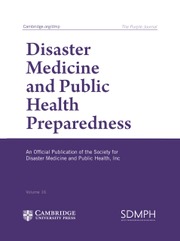Cardiopulmonary resuscitation (CPR) remains a cornerstone in emergency care, yet its success depends on timely execution, adequate resources, and effective teamwork. Despite global advancements, barriers to high-quality CPR persist, especially in resource-limited settings such as Palestine, where evidence remains scarce.
We conducted a cross-sectional study in the emergency departments of governmental and private hospitals in Hebron, Palestine (January-February 2024), to identify factors influencing CPR quality from nurses’ perspectives. Eighty-three emergency nurses participated, the majority of whom (75.9%) had over 4 years of experience, and 67.5% had completed Basic Life Support training.
Our findings revealed key barriers: unfamiliarity with emergency trolleys (92.8%), equipment failure (89.2%), and lack of team harmony (88%). Conversely, the presence of a designated leader during CPR was the most frequently reported facilitator (86.7%). These results align with international literature emphasizing structured leadership and team dynamics as critical for improving resuscitation outcomes. 1 , Reference Lauridsen, Krogh and Mûller 2 Statistical analysis showed significant associations between demographic variables and perceptions of CPR challenges, including gender and team stress perception (P = .042), and working shifts and leadership presence (P = .020).
These findings underscore the importance of systemic and organizational interventions. Leadership during resuscitation enhances role clarity and communication, mitigating stress and improving performance.Reference Lauridsen, Krogh and Mûller 2 , Reference Qtait 3 Similarly, equipment readiness and staff familiarity with emergency trolleys are essential to prevent delays during life-saving interventions.Reference Ghasemi, Rezapour-Nasrabad and Mokhlesabadifarahani 4 Addressing these gaps through simulation-based training, leadership development programs, and regular equipment audits could significantly improve CPR performance in Palestinian hospitals.
Interestingly, personal stress was considered a major barrier by 79.5% of nurses in our study, in contrast to reports from Brazil, where stress was perceived as less impactful.Reference Filho, Santana-Santos, De Cássia Gengo and Silva 5 This variation suggests cultural and contextual differences that merit further exploration through qualitative research.
In conclusion, improving CPR outcomes requires a dual focus on human factors, such as leadership and stress management, and organizational resources, including equipment availability and training. We recommend that the Ministry of Health adopt structured policies for CPR preparedness and mandate periodic team-based training programs to enhance emergency care quality.

